Campfire Audio IO - Dual Balanced-Armature IEM - Review

Review written by Anthony Nguyen (@antdroid)
Introduction
The all-new IO is the latest from Campfire Audio, and features a whole new packaging style and build than their previous iterations. The new IO features two balanced armature drivers within each of its garnet red shells. The IO has a sensitivity of 109 dB SPL/mW and 26 ohm impedance at 1KHz, and is being offered at $299, putting it between the Campfire Comet and Campfire Orion, in terms of affordability.
I received this loaner unit as part of The Community Preview program at The HEADPHONE Community, which is hosted by headphones.com. This review was conducted over a couple weeks using various sources (DAPs, desktop amp/dacs, and out of an iPad).

The All-New Campfire Package
Campfire Audio products have all featured interesting and unique sound signatures that may or may not appease everyone, including myself, but one thing that is universally praised is their packaging and bundled accessories. They’ve always hit high marks with their presentation, quality and abundant accessories and customer service, and the 2019 refresh takes the high benchmark to another level.
The new packaging is a real treat to open up and look at. CFA stepped up their already top-tier packaging and accessories bundle for this new line of IEMs. I was surprised to see that this came with 3 sets of mesh shell cases. These cases were recently offered to help protect the anodized shells from scratches and dents, and now you’ll have a few extras in case you lose one or two.
The garnet-colored shell is more of a dark red/purple tint than what I thought of in the photos, but they look stunning to me. The gold-plated screws contrast perfectly with the red shells and really make these look striking.
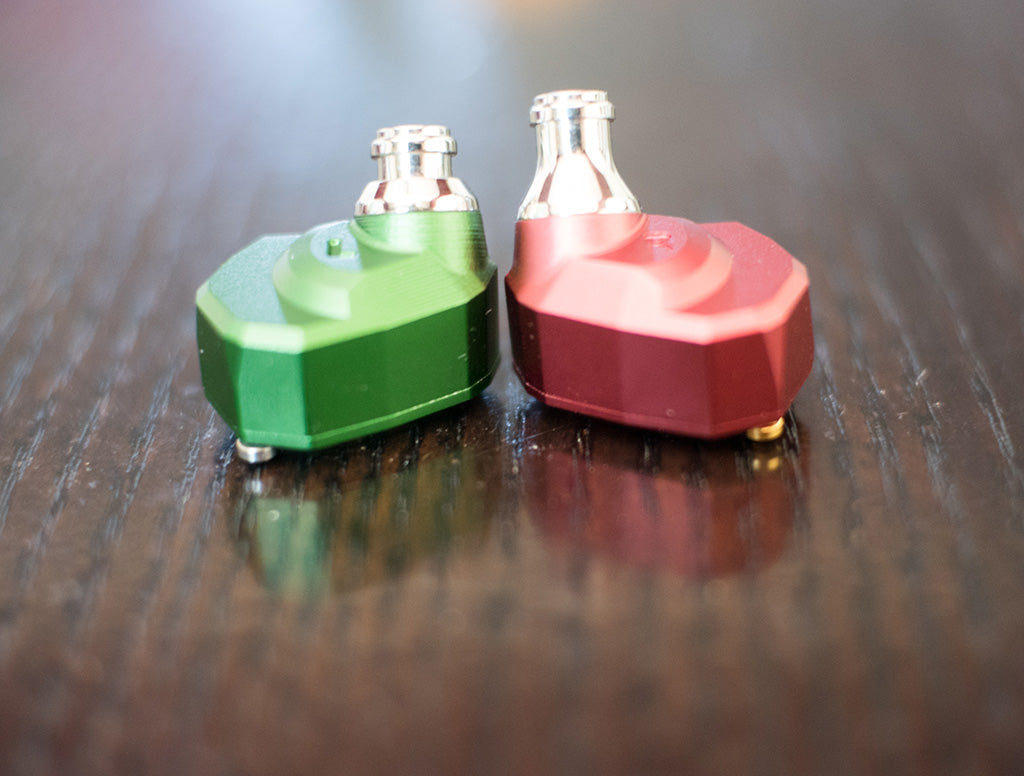
The IO also changed the shallower nozzles from their previous lineup and replaced them with the longer Solaris-style nozzles and this makes this shell much more comfortable for me than the Andromeda/Orion and previous generation Campfire products. I barely feel these on my ears and the sharp edges don’t touch the back of my ears anymore.

The new storage case design is reminiscent of a small coin purse, and looks very nice. It’s made of real leather, and hand-made in Portugal. The outside of the case is soft, but sturdy enough, and the inside is padded with wool-like material. It definitely smells the part of genuine leather.
Finally, the new dark gray colored cable is a treat to use, especially when compared to the previous cables used in Campfire products. The cable is thinner than the ones packaged with the Andromeda and Solaris, which I have with me, but is much more usable. Gone away is the memory wire hooks, and replaced is a pre-formed hook that I very much prefer. The cable is soft and flexible, and does not tangle easily, which is a huge improvement over the previous cables.

IO's Unique Sound
The Campfire IO has an interesting, and unique signature and I think it’ll be unusual to many people. The IO is a relatively flat tuning, but has a different mids-profile than more common sound signatures do, which may put many people off. Besides, that, the IEM has very good technicalities and wide soundstage with plenty of details. But let’s go over some of the things I’ve discovered in more detail during my time with the IO.

Bass
The low end of the IO is extremely clean and has a touch of warmth to it. The subbass does dig down, but generally stays even keeled throughout. There’s a lot of good to say about how fast the bass attack is, and how good the layer is in this area. It takes a similar general approach of the Campfire Orion in this regard, but boosts the bass and extends it further down, all the while, improving upon its detail level.
This is not an IEM for bassheads. Its for someone who likes quality over quantity and I think the IO does well here, and generally recommend it for songs that are focused more on bass and treble, as it does both of those quite areas quite well.
Mids
The mids are another story though. I find them quite wonky, and it has a lot to do with the sharp peak between 1-2KHz followed by a complete cliff, which enders the upper mids almost absent. This is where I find the IO to have quite a “unique” signature. Because of this, I find that a lot of the presence energy inadequate and lacking.
In terms of listening, I find vocals are recessed and off, and specifically female vocals have a weird haze to it. Cymbals, guitars, and other string instruments also exhibit this behavior. It has a low fidelity sound to it – a veil. Deeper male vocals don’t exhibit the same issues as females, though there still is a weird tinny-haze to them occasionally.
In more detail, for a few songs I listened to which feature prominent female vocals like “Dreams” by Fleetwood Mac, the voice of Stevie Nicks is just off. The bass line sounds good, but the cymbals just lose their sense of splash. Nick’s voice is extremely distant, and not only that, she sounds like she’s off-stage behind the curtains somewhere. It’s like the drummer is playing on stage by himself, and the rest of the band is behind the curtains. It’s unusual to me.
In another track, Norah Jones’ “Seven Days”, the haze is not quite as apparent when listening. Jones’ voice doesn’t suffer quite as severely as Nicks does, but I can hear just the slightest of energy missing. It’s not until I start A-Bing back and forth with other IEMs that I notice the severe lack of mids.
I A-B’d many IEMs with the IOs to get a grasp of how other IEMs stack up and one by one switching between the IO and the other model (e.g. Etymotics ER3SR, BGVP DM7, Moondrop Kanas Pro, Campfire Solaris, Campfire Andromeda, Knowledge Zenith ZS7, to name a few), it was like lifting the curtains and letting the rest of the band be heard again.
Going from one of the “other” models and back to IO was like sucking the energy right out of the room. To me, it felt like a bright sunny day, with glorious spring time flowers and animals walking around, and then all of the sudden, dark clouds rolling in, darkening the scene, and the cute animals hiding in fear of the incoming weather. Maybe this is a little bit of an exaggeration, but for someone who is used to listening to more balanced mids, I find the IO tuning of this area very lacking.
Treble
The treble region performs well on the IO, despite the upper mid void. The IO extends further into the treble ladder than the Orion and with more sparkle and air than the Comet. While cymbals and hi-hats have good splashy characteristics, they do sound a tad hazy and muffled, as is the entire sound profile.
Equalizer
To attempt to see if I could adjust the frequency response to further match my preferred sound signature, I tried to elevate the upper mid between 3 and 5KHz up quite a bit to bring presence energy back and for the most part it’s successful. That said, it’s not perfection. The edges of vocals and strings have fringes of hazy artifacts remaining, and this could be a combination of the extreme equalizer gains and the remnants of the unique sound signature the IO presents.
Select Comparisons

Etymotics ER3SE
The Etymotics brand started the In-Ear headphones phenomenon and their diffuse-field tuning has remained consistent and popular over the years. The ER3SE is one of their newer single BA products and makes a great comparison and contrast to the IO. The ER3 and the Etymotics bread and butter ER4SR have similar sound profiles, so this generalization can be attributed to both models.
The IO outpaces the Etymotics in soundstage width and depth, and the dual-BA set up really help the IO extend bass and treble better than the ER3SE. I found the detail resolution of the IO to also outshine the Etymotics, however it’s the mid-range tuning that I find the ER3 outperforming the IO by a significant distance. Much of this is already covered in the main body of the review, so I won’t go over it again. The ER3 is a much more intimate sound, but is very neutral and balanced sounding, albeit maybe lacking a little bit of sub-bass and general bass response. The IO does everything right and better for me, except the mids.
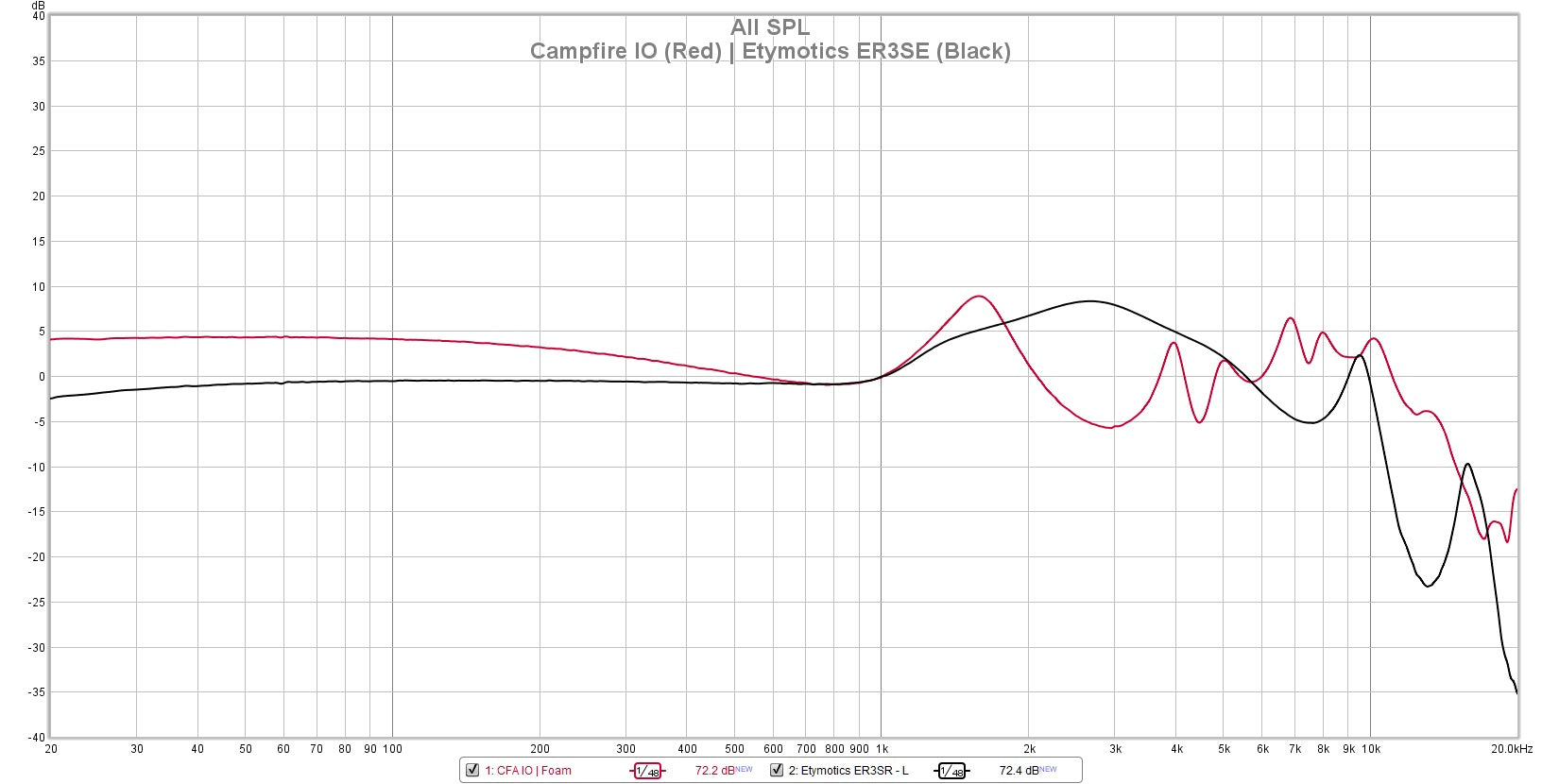
Campfire Andromeda
A lot the initial discussion when IO was announced was whether it would be the “baby Andromeda” or not, much like the Orion was hyped up to be. While I find the IO is closer to the Orion as a “baby Andro” contender, it’s not quite there due to its mid-range issues. The bass is lighter on the IO than on Andromeda, but the treble region is equally as exciting and impressive. The mids, while somewhat tame and laid back on the Andromeda, is much more balanced and even-keeled, and does not sound off to me.
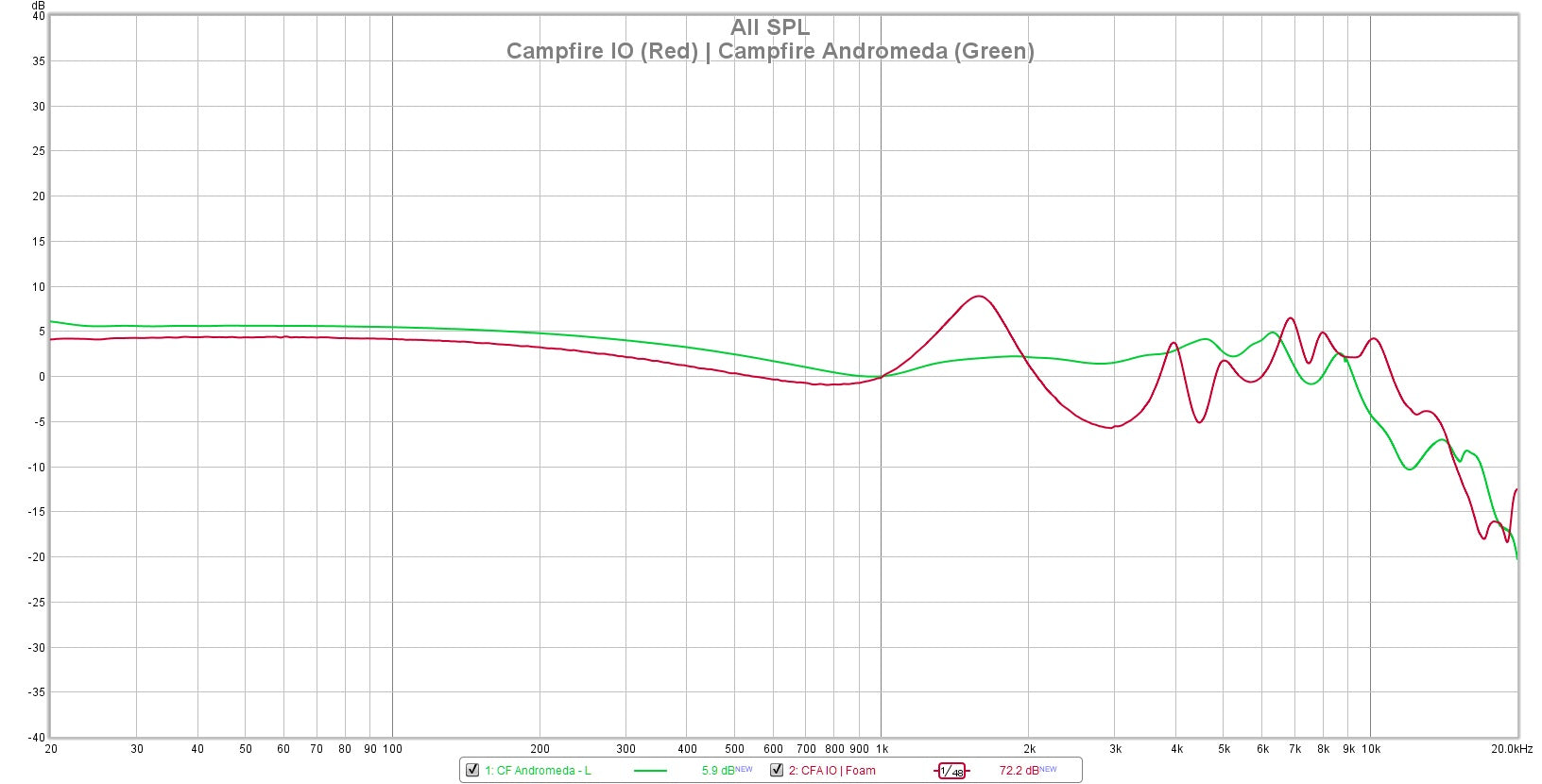
BGVP DM7
The latest BGVP DM7 IEM is priced similarly at $299 as the IO. The two differ quite a bit after that. The DM7 bass response is slower, but denser, but still well controlled. The IO extends higher and has a much wider soundstage and I’d also give the nod to IO for detail retrieval and general technical ability. Again, the mids is where these differ quite a bit, with the DM7 having a much more mid-forward sound, and the IO having a distant, and unique mid signature.
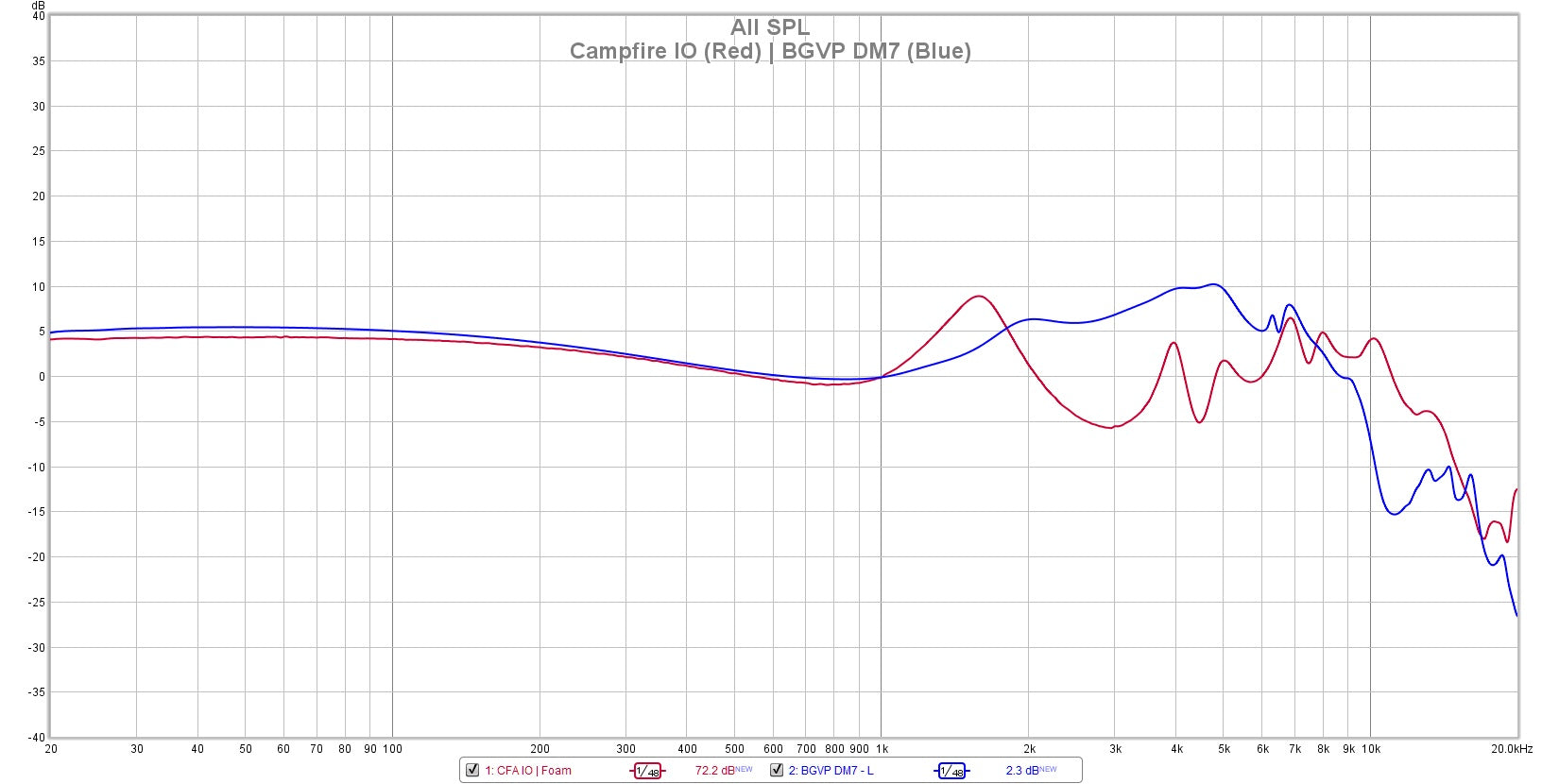
Moondrop Kanas Pro
The Moondrop Kanas Pro is priced at $179 and one of my favorite IEMs at any price point. The Kanas Pro follows a tuning reminiscent of the Harman IEM Target Curve with slightly less lower-bass elevation. As some may know, the mids of the Harman Curve as a little bit recessed, but I find that the Kanas Pro is still more up front in the mid-range than the IO. The bass elevation is similar on both, but the IO is quicker and has better layering. The Moondrop Kanas Pro detail is similar but may be a tad behind the IO, but the general sound signature is much more coherent across the board. The IO extends treble noticeably better than the Kanas Pro, due to its upper end energy.
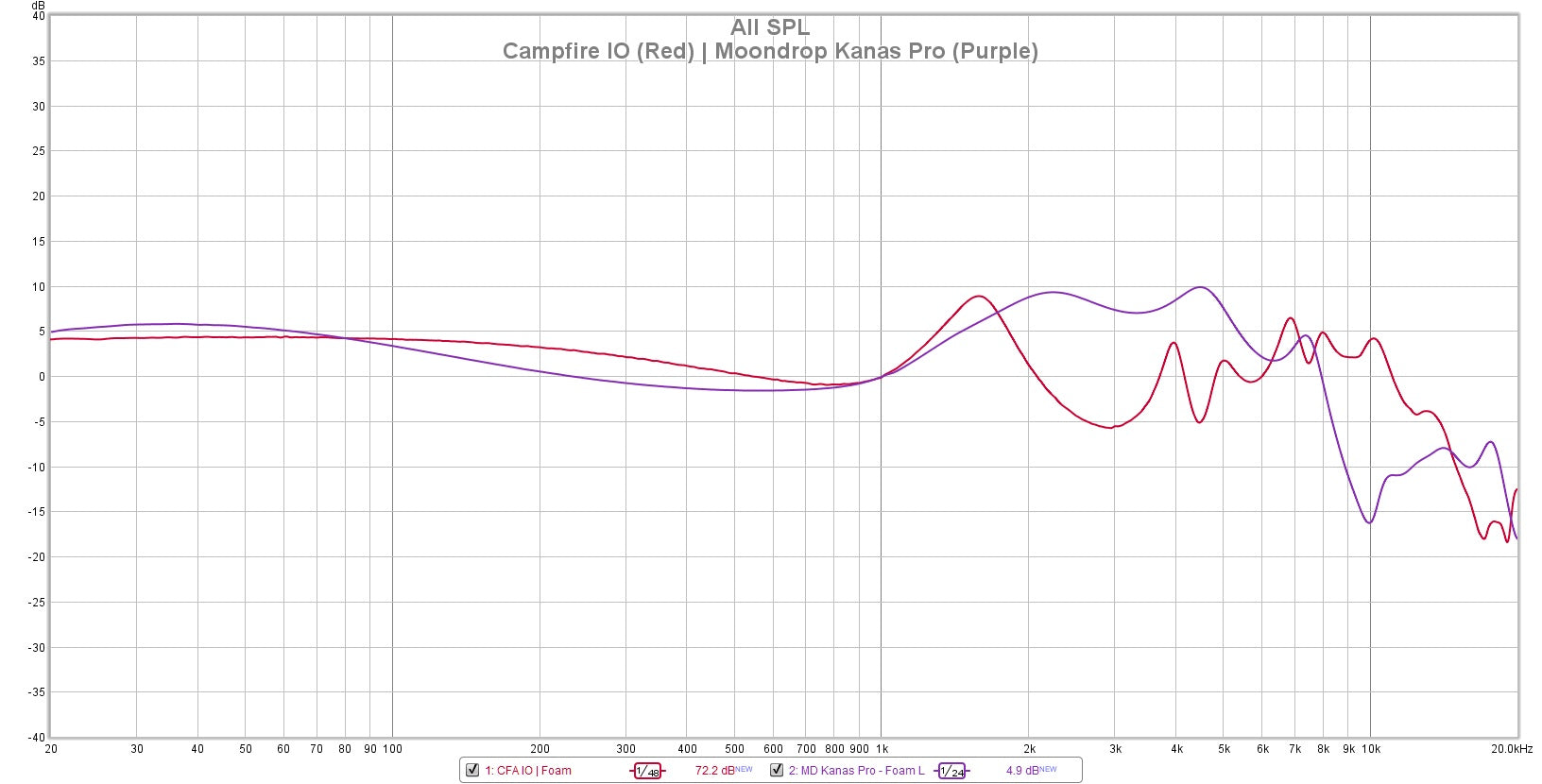
Overall
Overall, I found the IO to be technically capable and having a lot to like about them, however with one single fatal flaw – the mid-range issues. To me, I enjoy upper midrange to be a little bit more forward, and to provide the energy to what I am listening to. It does not have to be over the top and doesn’t even need to be totally even – see my Solaris review – but the IO just doesn’t cut it. The excessive 1.5KHz peak topped with the absent upper-mids makes this something I personally do not enjoy for about 85% of my music library.
The few genres I did find the IO to work well in are some male-dominated acoustic music, drum and bass music, trip hop, and other genres that focus much more heavily on the upper and lower bounds of the audible spectrum. There’s just too much veil in the mids to make me content with listening to music in a different way than I have my entire life.
That’s a little bit unfortunate because I otherwise love the IO’s package. Great build, color choices, fit, accessories, and presentation, to go along with some really great detail resolution, speed, and a wide soundscape that mark the high points of the IO.
In the end, I was hoping for an improvement in the Orion, which in many ways it did, but it also killed off the best part of the Orion – the mid-range coherency.
- Anthony Nguyen (@antdroid)
---
Join the discussion about the Campfire Audio IO on "The HEADPHONE Community".
---
---
Comments and questions should be directed to the appropriate thread on the headphones.com forum (“The HEADPHONE Community”), if you want me to see/respond to them.
